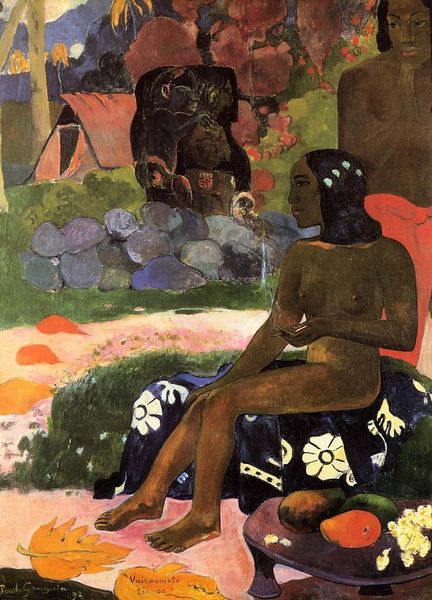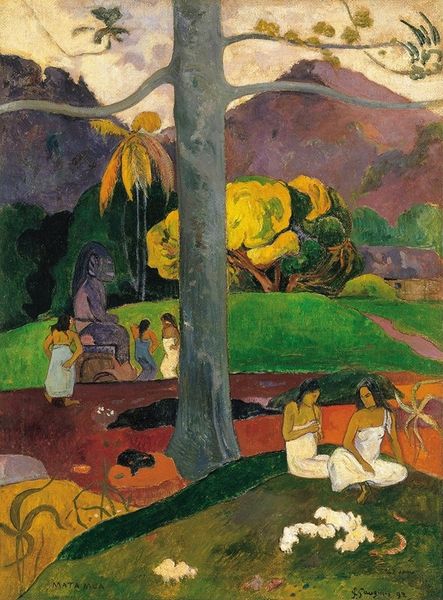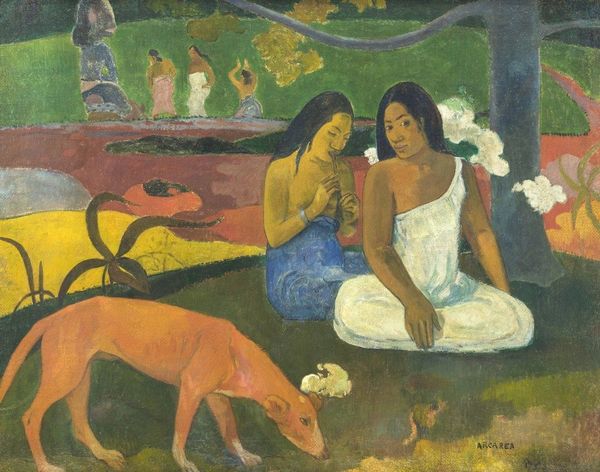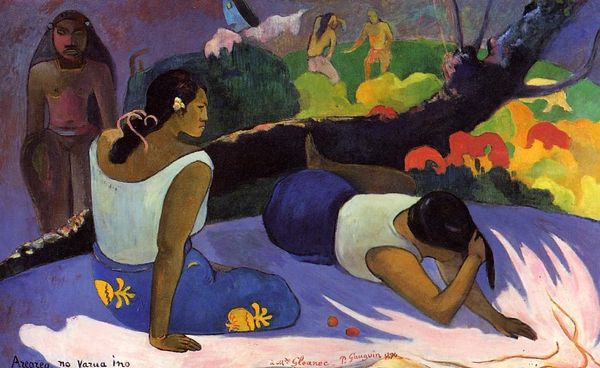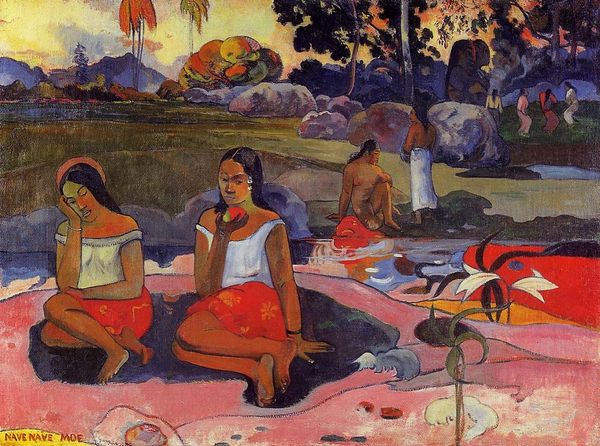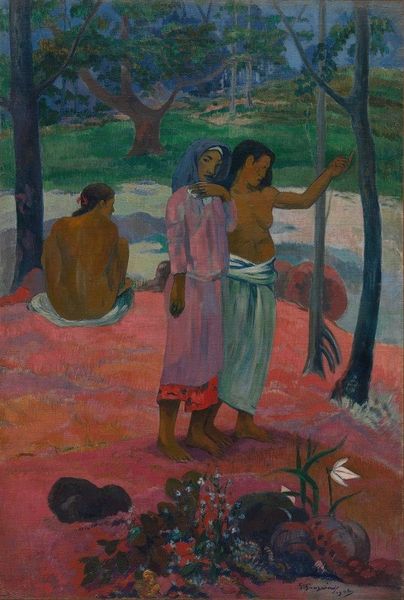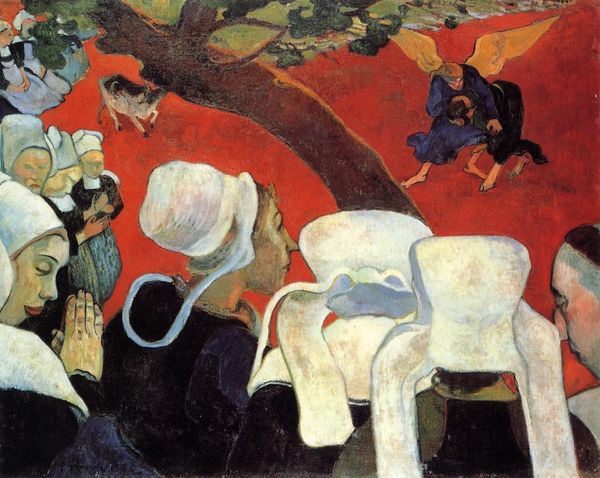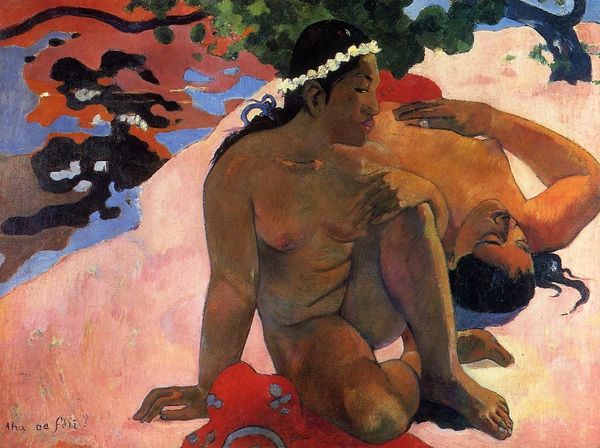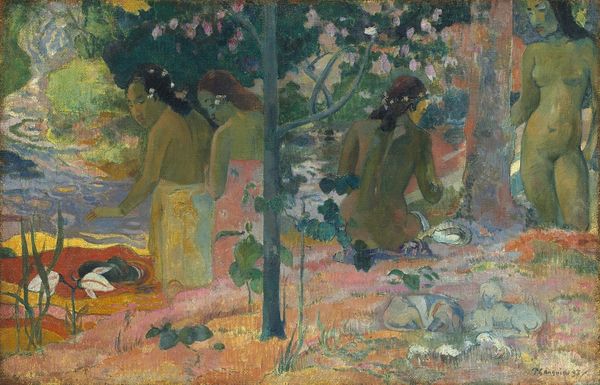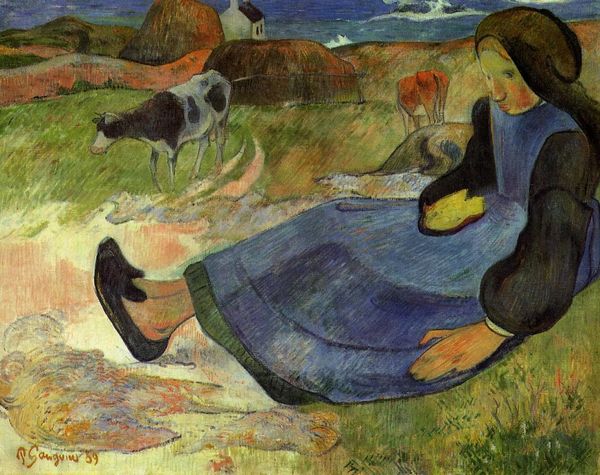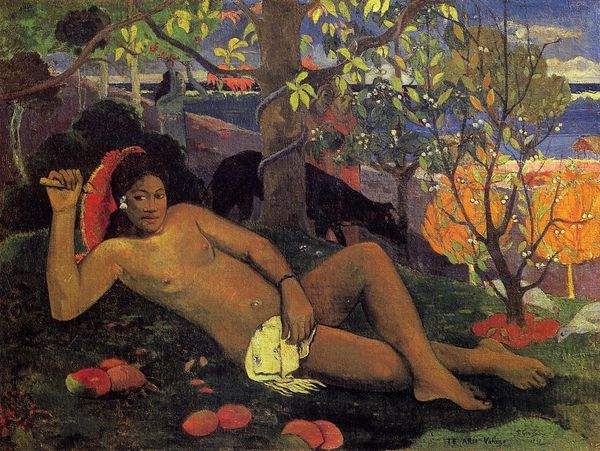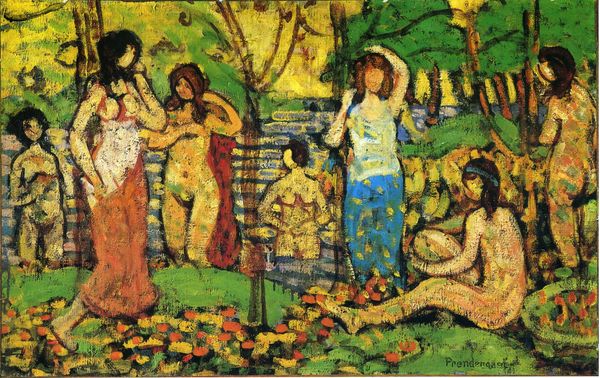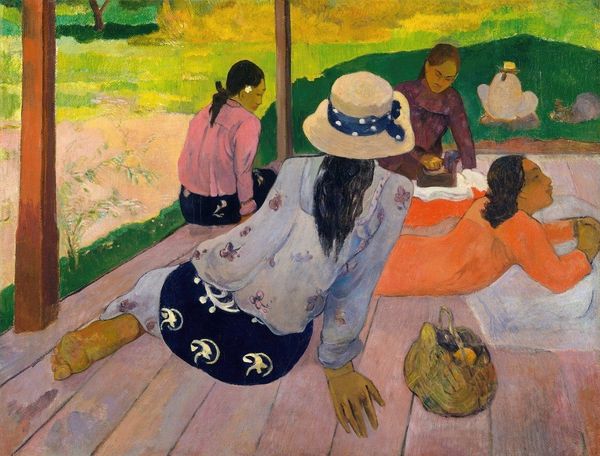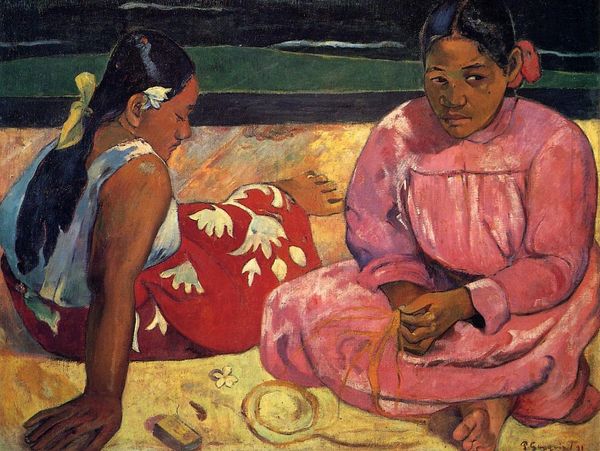
painting, plein-air, oil-paint
#
tree
#
narrative-art
#
animal
#
painting
#
plein-air
#
oil-paint
#
dog
#
landscape
#
painted
#
figuration
#
oil painting
#
naive art
#
orientalism
#
post-impressionism
Copyright: Public domain
Curator: Paul Gauguin's "Tahitian Pastorale," painted in 1898. What are your initial thoughts? Editor: Immediately, it feels otherworldly. The colors are saturated, almost dreamlike, and the figures possess a kind of serene stillness. Curator: Gauguin rejected academic naturalism. He worked with oil paints on canvas. There’s a clear emphasis on flatness and the symbolic use of color to convey emotions and ideas, far from a straightforward depiction of Tahiti. He wasn’t interested in accurately documenting anything! Editor: Precisely! Observe the postures of the women. One stands wrapped in a white cloth, carrying something, and another sits playing a flute. The dog, the vessel to the left, the lily, these objects tell their own story— a mythology of Gauguin's making, layered into the image. Curator: I agree, the so-called primitive lifestyle. These weren't just observed scenes, but rather constructed realities that played into Western fantasies. Take into account the supply chains that produced those tubes of paint in the first place. And, furthermore, look at how the artist uses broad brushstrokes. There is something raw in its materiality that belies the layers of idealization embedded in the final image. Editor: Absolutely. We cannot disentangle his vision of the Tahitian ideal from the visual language he employs. But beyond the colonial lens, let’s think of the image’s composition; what kind of atmosphere and symbolic significance arises. This tension— the cultural overlay versus an expressive landscape— grants the work such energy. What meaning emerges in you, reflecting on it? Curator: Considering how his art has entered the collections and exhibitionary programs of global museums. The material conditions are inevitably caught up with cultural power and questions of appropriation. Editor: True, its continued presence demands examination and the deconstruction of its symbols and what these symbols reveal about cultural continuity through imagery. It's a striking and, to some extent, unsettling creation. Curator: Definitely much more complex than at first glance, when one unpacks the labor, materials, and cultural baggage inherent in its production. Editor: An apt reflection that underscores the layered nature of visual experience through Gauguin's vision.
Comments
No comments
Be the first to comment and join the conversation on the ultimate creative platform.
